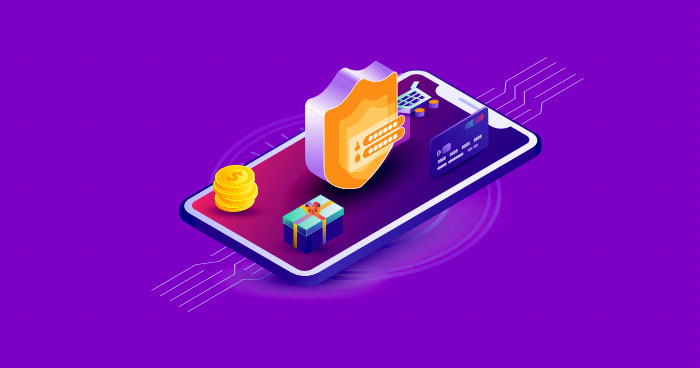
“From humble manual checks to the cutting-edge technology of device fingerprinting SDKs, explore how our digital landscape is becoming safer by the day.”
In the good ol’ days, if someone mentioned fraud detection, I’d instantly picture a detective with a magnifying glass, meticulously inspecting paper trails and, let’s be honest, getting paper cuts more often than catching culprits. Times have certainly changed.
Today, the world of fraud detection has transformed beyond recognition. Gone are the magnifying glasses, and in are sophisticated algorithms and technologies that sound straight out of a sci-fi novel. One such advancement we’ll delve into today is the marvel of device fingerprinting. So, as we journey through the evolution of fraud detection, let’s bid farewell to our imaginary detective (and his paper cuts) and dive deep into a realm where technology takes the lead in safeguarding our digital domains.
The Humble Beginnings: Manual Checks
Once upon a time, before the flashy buzzwords of “cyber security” even entered our vocabulary, the concept of fraud detection was, in a word, basic. Manual checks were the norm, and they held their ground as the gold standard in verifying transactions and establishing trust.
I remember those days fondly; a time when personal intuition was our main weapon against deceit. A suspicious transaction? It’d be down to a person’s gut feeling, coupled with some basic cross-checks, to determine its legitimacy. It is a far cry from today’s advanced methods, but it had its charm.
However, it wasn’t long before the limitations of such an approach became evident, highlighting an undeniable need for more robust and sophisticated cybersecurity measures.
Intermediate Methods: The Digital Transformation
The era of manual checks gave way to a time I fondly call the ‘Digital Renaissance.’ This period was a turning point in the way we approached fraud detection.
Gone were the days of solely relying on human intuition. Instead, the first automated fraud detection systems stepped into the spotlight with algorithms designed to spot inconsistencies faster than any human could.
These systems, to my delight, primarily aimed at combating a rising phenomenon known as Advert Fraud. But the real game-changer in this phase? Big data and machine learning. By harnessing vast amounts of data and learning from patterns, the accuracy of fraud detection systems underwent a revolutionary improvement.
I’ll never forget my astonishment when I discovered how these automated systems were adeptly catching frauds that previously slipped right under our noses. The transformation was not just digital but a monumental leap in how we perceived and combated deceit in the cyber realm.
The Age of Sophistication: Introduction to Device Fingerprinting
As the world of fraud detection evolved, we ushered in an age marked by sheer technological finesse. Among the many innovations, device fingerprinting emerged as a star player. So, what exactly is this elegant piece of technology?
Simply put, device fingerprinting identifies and tracks devices based on a set of unique attributes and characteristics. It’s like giving each device its own unique ‘digital DNA,’ making it possible to detect suspicious activities or unfamiliar devices trying to gain access.
Benefits of Device Fingerprinting:
Precision: Offers a higher level of accuracy by pinpointing specific device attributes.
Proactive Protection: Allows for early detection of potential threats by recognizing unfamiliar devices.
Reduced False Positives: By understanding a device’s unique fingerprint, it minimizes the chances of mistaking a legitimate user for a fraudster.
Enhanced User Experience: Users aren’t bombarded with unnecessary security challenges; only genuine threats trigger additional checks.
The first time I stumbled upon device fingerprinting, I was researching advanced security techniques. My initial skepticism was quickly replaced by admiration. A technology so refined, it could differentiate devices based on minute details, ensuring that malicious entities didn’t stand a chance.
The realization hit: we were no longer in an age of mere digital transformation, but an era where technology had fine-tuned our defense mechanisms to unparalleled sophistication.
The Future is Now: Device Fingerprinting SDKs
The realm of device fingerprinting is evolving at a blistering pace, and at the forefront of this revolution are Device Fingerprinting SDKs (Software Development Kits).
Now, you might be wondering, “What’s the big deal with SDKs?” Well, they’ve played an instrumental role in making the intricate world of device fingerprinting widely accessible. These SDKs provide developers with pre-built tools and frameworks, enabling them to seamlessly integrate fingerprinting features into apps and platforms. Whether you’re a tech enthusiast, a user, or a business owner, this means fortified security without the need for complex implementations.
Just think about it: enhanced protection from fraud at your fingertips, with minimal hassle.
The first time I delved into a device fingerprinting SDK, I was taken aback by its simplicity and efficiency. It’s like having a security expert packed into a toolkit, ready to be unleashed. My optimism for our digital future has never been higher; much of that hope hinges on advancements like these. A world where our online presence is both fluid and fortified seems not just a distant dream but a rapidly approaching reality.
Conclusion
Tracing our steps back through the rich tapestry of fraud detection’s history, it’s abundantly clear how essential this evolution has been for our increasingly digital world. From the nostalgic days of manual checks to the cutting-edge prowess of device fingerprinting SDKs, our journey toward a safer digital haven has been nothing short of transformative.
But the story doesn’t end here; it’s a continuous saga of innovation and adaptation. To you, the diligent reader, my parting words are simple yet crucial: stay informed and remain vigilant.
The digital landscape is ever-shifting, and while technology equips us with formidable tools, our awareness, and proactive stance are the best safeguards against the shadows lurking in the cyber abyss. Embrace the future, but always with an attentive and discerning eye.

